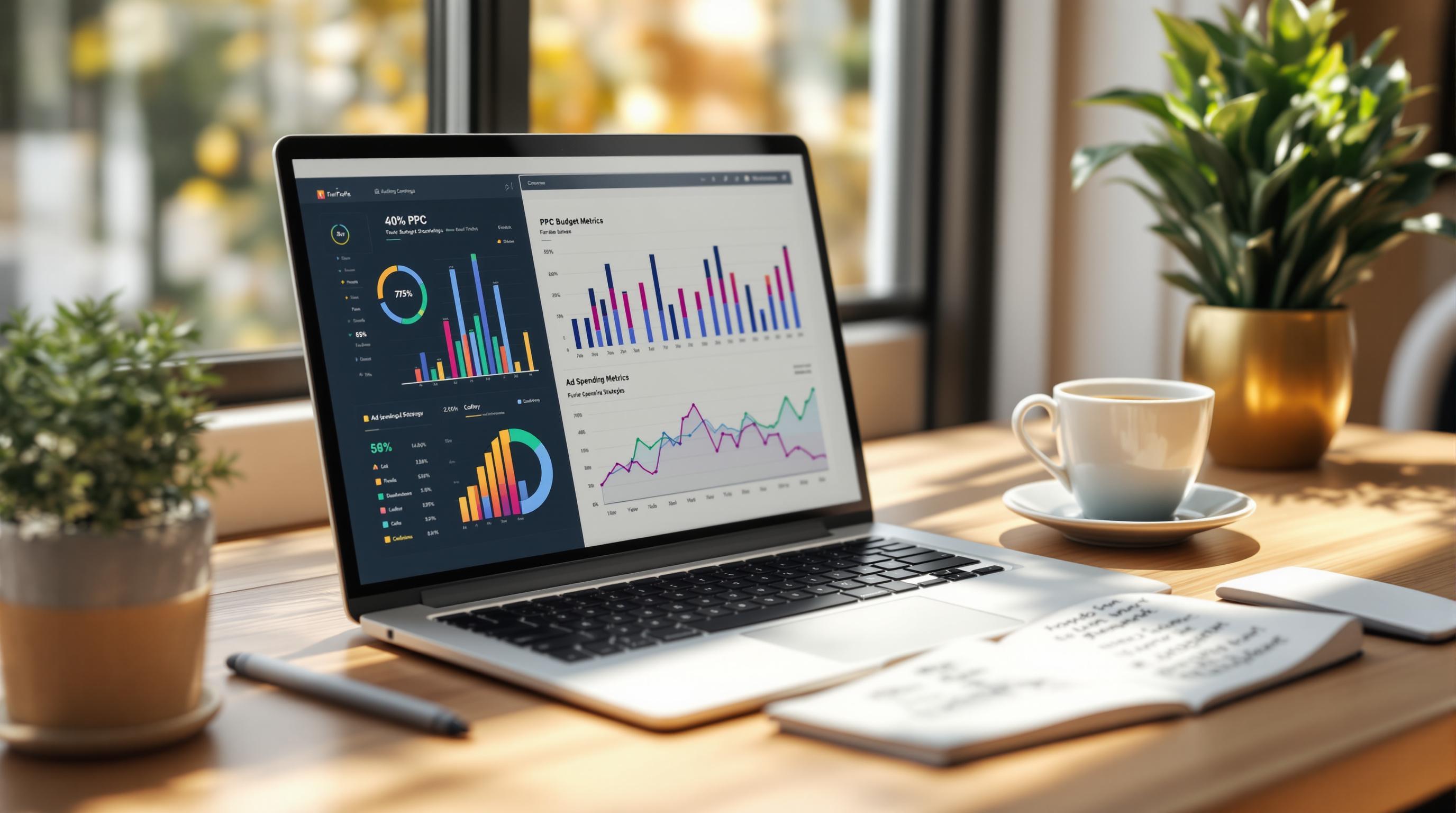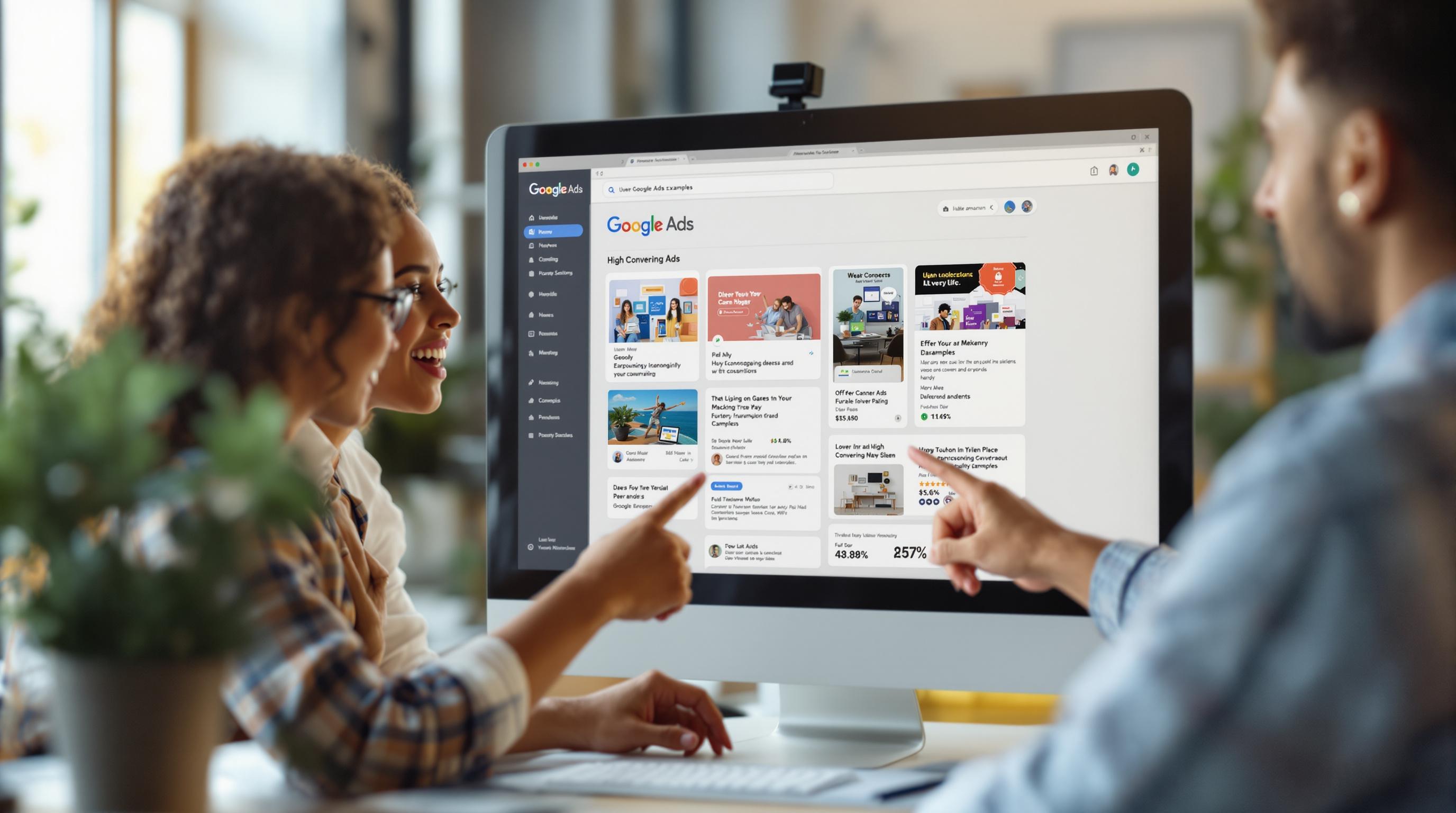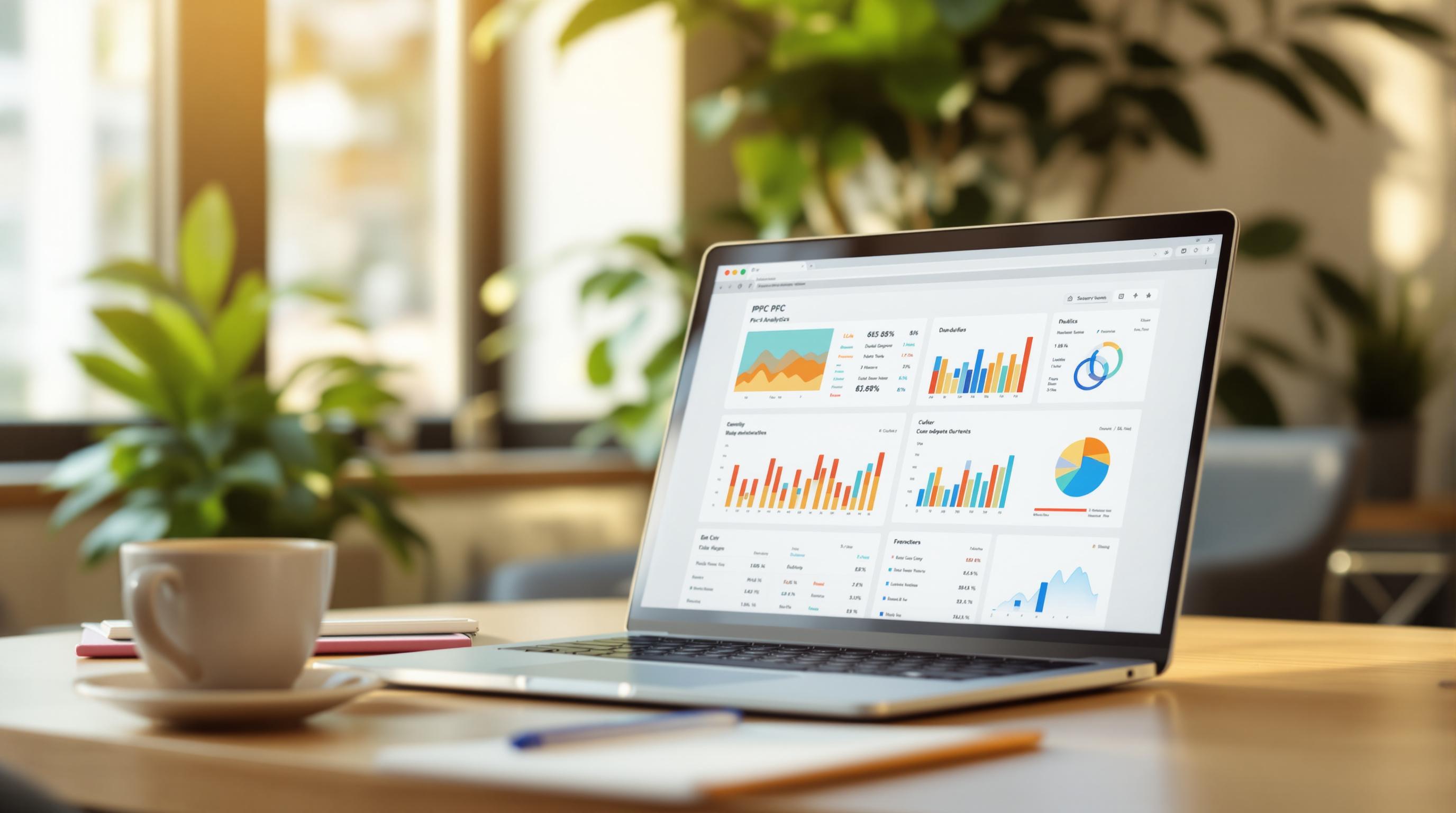Retargeting platforms help businesses reconnect with potential customers who’ve interacted with their brand. Here’s a quick guide to the top 8 platforms and what they offer:
- Google Ads: Best for large-scale campaigns with vast reach across search, display, and YouTube.
- Facebook Ads: Ideal for social-driven campaigns with dynamic product ads and strong audience targeting.
- AdRoll: Perfect for managing cross-channel campaigns from a single dashboard.
- Criteo: Specialized in e-commerce with AI-driven dynamic ads and predictive bidding.
- Perfect Audience: Affordable, multi-channel retargeting for small to medium businesses.
- ReTargeter: Advanced targeting with dedicated account management for high-traffic sites.
- SharpSpring Ads: Great for B2B companies with behavioral targeting and CRM integration.
- Meteora: Perfect for location-based campaigns with geofencing and proximity targeting.
Quick Comparison
| Platform | Strengths | Best For | Average CPC |
|---|---|---|---|
| Google Ads | Wide reach, advanced analytics | Large campaigns, e-commerce | $1.23 |
| Facebook Ads | Social targeting, dynamic ads | Social media campaigns | $0.70 |
| AdRoll | Cross-channel management | Mid-large businesses | $0.66 |
| Criteo | AI-driven optimization | Enterprise e-commerce | $1.20 |
| Perfect Audience | Affordable, easy to use | Small-medium businesses | $0.85 |
| ReTargeter | Advanced targeting, managed service | High-traffic websites | $1,500/month |
| SharpSpring Ads | B2B focus, CRM integration | B2B companies, agencies | $1.20 |
| Meteora | Geofencing, location targeting | Local businesses, retail | $0.85 |
Each platform caters to different needs - whether you’re running a large e-commerce campaign or targeting local customers. Choose based on your budget, audience, and campaign goals.
Related video from YouTube
1. Google Ads: Features and Advantages

Google Ads is a leader in the PPC retargeting space, commanding nearly 40% of the total PPC advertising market. Its platform taps into Google's vast ecosystem, including search results, the Display Network, and YouTube, giving advertisers unmatched reach.
The pricing model is straightforward: primarily pay-per-click (PPC), where costs depend on factors like ad relevance and quality score. For display ads, there's also a cost-per-thousand impressions (CPM) option, offering flexibility for different budget strategies.
Here’s what the platform brings to the table:
| Feature Category | Capabilities |
|---|---|
| Targeting Options | - Custom audiences and interest-based targeting for detailed segmentation - Demographic filters - Lookalike audiences for expanding reach |
| Ad Formats | - Responsive search ads - Dynamic display ads - Shopping ads - YouTube video ads - App promotion ads |
| Integration | - Google Analytics - YouTube - Google Play - Gmail - Display Network |
Dynamic remarketing takes personalization to the next level by tailoring ads based on the specific products or services users have browsed. Using machine learning, the platform fine-tunes ad delivery to boost conversions.
"The integration between Google Ads and Google Analytics provides detailed insights into campaign performance. This allows marketers to track key metrics such as conversion rates and return on ad spend (ROAS) with precision, making it easier to justify and optimize advertising investments."
Google Ads also excels in cross-device targeting and audience management. Advertisers can segment audiences based on behavior, interests, and demographics, ensuring that ad spend focuses on the most promising leads - all while staying compliant with privacy regulations like GDPR and CCPA.
Although Google Ads dominates PPC advertising with its broad capabilities, platforms like Facebook Ads bring their own strengths, especially in social media retargeting.
2. Facebook Ads: Retargeting Capabilities
Facebook Ads is a standout platform for retargeting, thanks to its massive user base across Facebook, Instagram, and the Audience Network. Its Custom Audiences feature enables businesses to zero in on users who have already interacted with them, making retargeting highly effective.
Facebook uses an auction-based pricing model, with average cost-per-click rates between $0.70 and $1.50, depending on the industry. Its machine learning system optimizes ad delivery and pricing based on your campaign goals and audience behavior.
Here’s a breakdown of its targeting options:
| Targeting Method | What It Does | Best For |
|---|---|---|
| Website Custom Audiences | Tracks site visitors using Facebook Pixel | Recovering abandoned carts |
| Engagement Custom Audiences | Targets users who interacted with Facebook content | Boosting social proof |
| Customer List Matching | Matches existing customer data (emails, phone numbers) | Upselling to current buyers |
| App Activity Custom Audiences | Retargets users based on in-app actions | Re-engaging mobile app users |
Facebook also offers a wide variety of ad formats, each tailored to different goals:
| Ad Format | Features |
|---|---|
| Dynamic Product Ads | Automatically shows relevant products from your catalog |
| Collection Ads | Creates an immersive shopping experience on mobile |
| Carousel Ads | Displays multiple products in a swipeable format |
| Video Ads | Autoplays in feeds (sound off by default) |
"Dynamic product ads have significantly enhanced e-commerce retargeting efficiency. Our internal data shows that advertisers using dynamic retargeting see an average of 12% higher return on ad spend compared to static ads."
One of Facebook's key strengths is its cross-device tracking, ensuring your messaging stays consistent as users switch between devices - a must-have in today’s multi-device world.
For e-commerce brands, Facebook integrates smoothly with platforms like Shopify and WooCommerce. This allows businesses to create dynamic product ads directly from their store catalogs, making setup quick and hassle-free.
Facebook also prioritizes compliance with GDPR and CCPA through its first-party data tools and contextual targeting, ensuring privacy without sacrificing ad performance.
While Facebook shines in social-driven retargeting, other platforms, like AdRoll, offer broader cross-channel options. We'll dive into those next.
3. AdRoll: A Closer Look
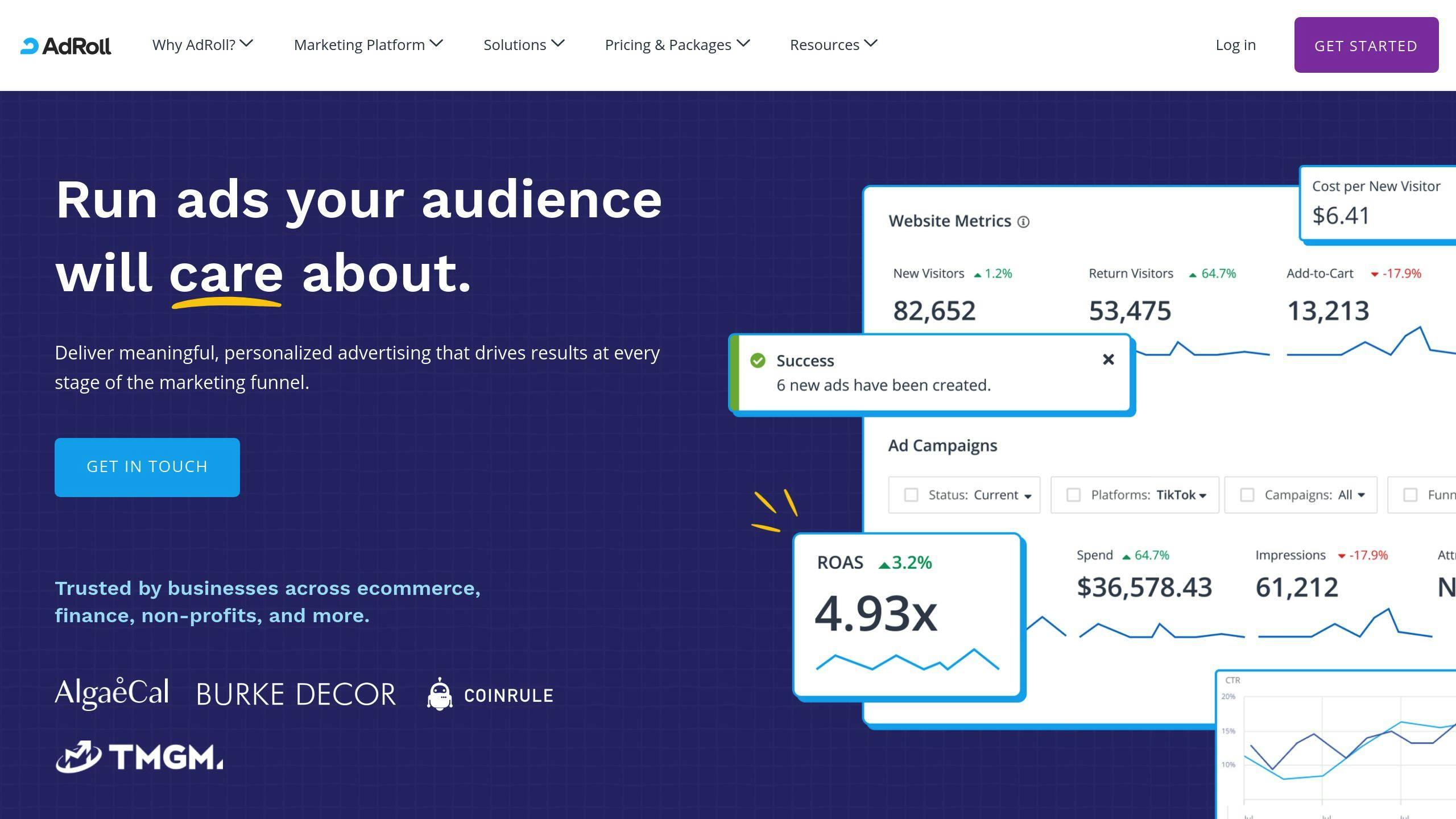
AdRoll is an all-in-one marketing platform that focuses on cross-channel retargeting. It allows marketers to manage campaigns across networks like Google Ads, Facebook, Instagram, and LinkedIn - all from one dashboard. Unlike Facebook Ads, AdRoll simplifies campaign management for those juggling multiple audiences and platforms.
Here’s a breakdown of AdRoll's integration options:
| Integration Type | Supported Platforms | Key Features |
|---|---|---|
| E-commerce | Shopify, WooCommerce, Magento | Syncs product feeds automatically |
| CRM Systems | Salesforce, HubSpot | Makes better use of customer data |
| Analytics | Google Analytics, Adobe Analytics | Tracks performance across channels |
AdRoll’s targeting tools are built around these key methods:
| Targeting Type | Features | Ideal For |
|---|---|---|
| Website & Email Retargeting | Tracks visitor actions and syncs email lists to re-engage users | Reconnecting with past visitors |
| Lookalike Targeting | Identifies new audiences similar to your current customers | Growing your audience efficiently |
AdRoll uses a performance-based pricing model, starting with a $100 minimum monthly spend. New users can try the platform with a free trial, which includes $100 in ad credits.
The platform automates ad personalization by showing users products they’ve viewed or similar items. It also ensures consistent messaging across all channels to maintain brand alignment.
AdRoll leverages machine learning algorithms to optimize ad delivery and bidding in real-time. These algorithms manage frequency caps to reduce ad fatigue and improve returns.
To stay compliant with GDPR and CCPA, AdRoll integrates consent management tools without compromising ad performance.
For experienced marketers, AdRoll offers detailed analytics and attribution modeling to track customer journeys across various touchpoints.
While AdRoll shines in cross-channel management, Criteo provides more specialized tools for e-commerce retargeting.
4. Criteo: Retargeting Features
Criteo uses AI-driven technology to process over 600 billion daily browsing and buying signals. This allows for highly accurate dynamic retargeting and optimized ad delivery. The platform's predictive bidding system automates the PPC process, with users reporting an average return of 13X on ad spend.
Here’s a breakdown of Criteo’s key targeting features across various campaign types:
| Campaign Type | Features | Best Used For |
|---|---|---|
| Dynamic Retargeting | Real-time bidding, Product recommendations | Product-based campaigns |
| Display Advertising | Cross-device tracking, Native ad formats | Building brand awareness |
| Video Retargeting | Personalized video content, Automated optimization | Engagement campaigns |
Criteo customizes ads in real time based on individual user behavior, such as browsing patterns, website interactions, product views, and purchase history. These personalized ads are displayed across a network of over 2 million websites and mobile apps.
"Criteo's AI engine analyzes over 600 billion browsing and buying signals daily to predict what users are likely to buy next", says Megan Clarken, CEO of Criteo.
The platform integrates smoothly with major advertising networks and e-commerce platforms, simplifying campaign management and automating product feed updates. It also includes advanced frequency capping to prevent ad fatigue, helping to maintain high engagement rates.
Criteo's focus on e-commerce makes it a strong choice for retailers aiming to boost product-specific retargeting performance. While AdRoll offers more extensive cross-channel options, Criteo’s cost-per-click model and specialized features are especially appealing to marketers focused on measurable results.
For smaller businesses or those needing more adaptable tools, platforms like Perfect Audience may be a better fit. However, Criteo remains a top choice for those prioritizing predictive bidding and e-commerce success.
sbb-itb-89b8f36
5. Perfect Audience: Platform Overview
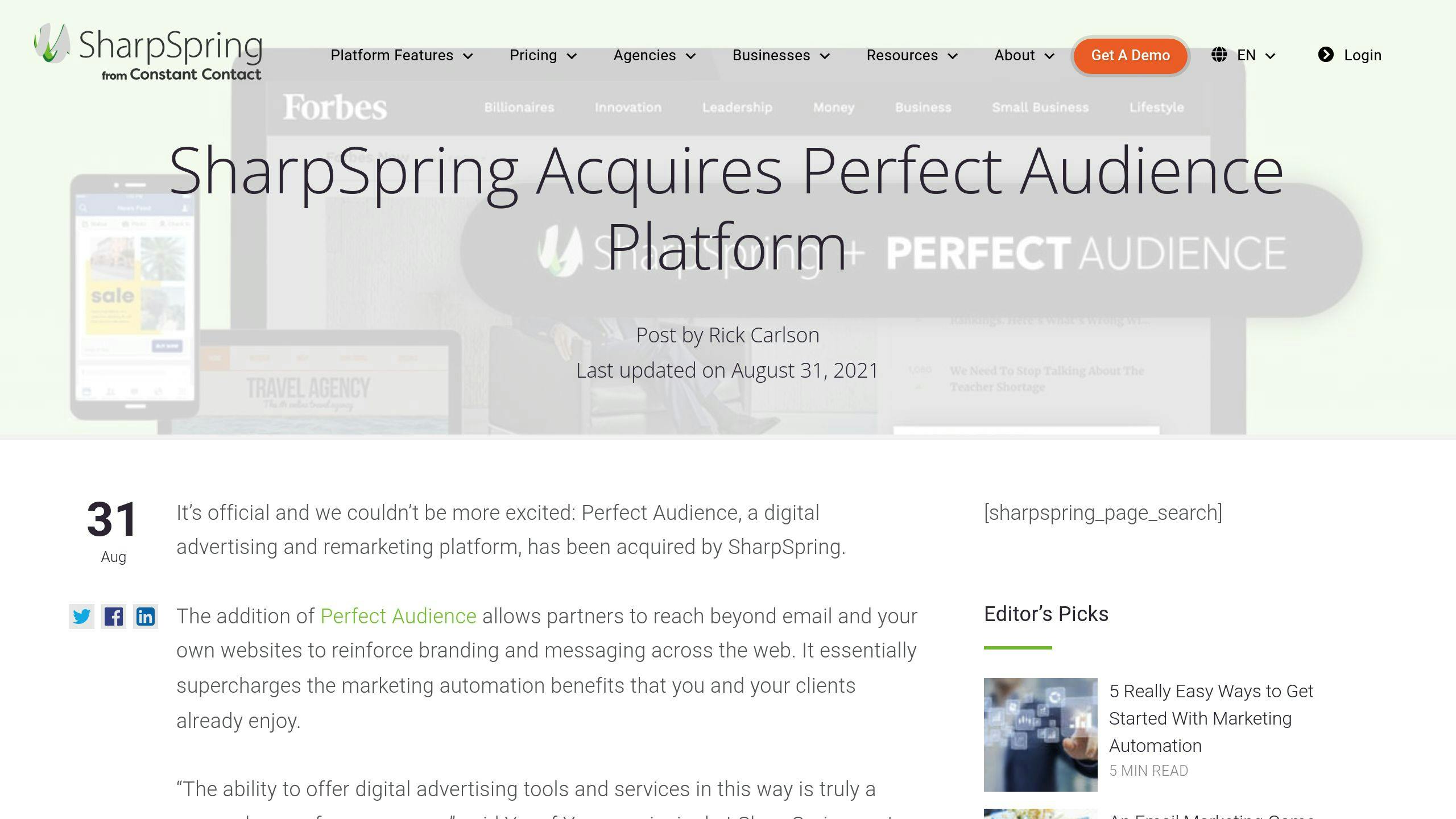
Perfect Audience makes its mark in the retargeting world with its ability to manage campaigns across devices and its many integration options. Through a single dashboard, businesses can control web, mobile, and social media retargeting campaigns all at once.
The platform’s targeting is built around three main approaches:
| Targeting Type | Features | Best Use Case |
|---|---|---|
| Behavioral | Tracks site visitors, Maps across devices | Recovering abandoned carts |
| Contextual | Targets based on weather or location | Promoting local businesses |
| Partnership | Shares audiences, Supports cross-marketing | Generating B2B leads |
Perfect Audience collaborates with leading ad exchanges like Google, AppNexus, and the Rubicon Project. By leveraging machine learning, it fine-tunes real-time bidding to increase ad reach across top-tier advertising spaces.
Its analytics refresh every two hours, giving marketers the tools to quickly tweak campaigns for better performance.
"Effective retargeting delivers relevant content based on user behavior at the optimal time." - Brad Flora, CEO of Perfect Audience
The pricing is straightforward - no setup fees or minimum spend requirements. Plus, new users get a $100 ad credit to test the platform, making it a low-risk option for small and medium-sized businesses trying out retargeting.
Perfect Audience also integrates with platforms like:
- Facebook Ads
- HubSpot
Dynamic retargeting adds a personal touch by tailoring ads based on user behavior and product catalog data. This means ads adjust automatically to reflect individual browsing habits and interactions.
Through cross-marketing partnerships, businesses can tap into shared audience pools. For example, companies can retarget users who’ve visited partner websites within the same industry or complementary sectors. This is especially useful for B2B companies looking to connect with pre-qualified audiences in niche markets.
For businesses seeking an affordable, multi-channel retargeting solution, Perfect Audience is a strong option. However, for those needing more advanced or specialized features, platforms like ReTargeter might be worth exploring.
6. ReTargeter: Key Features
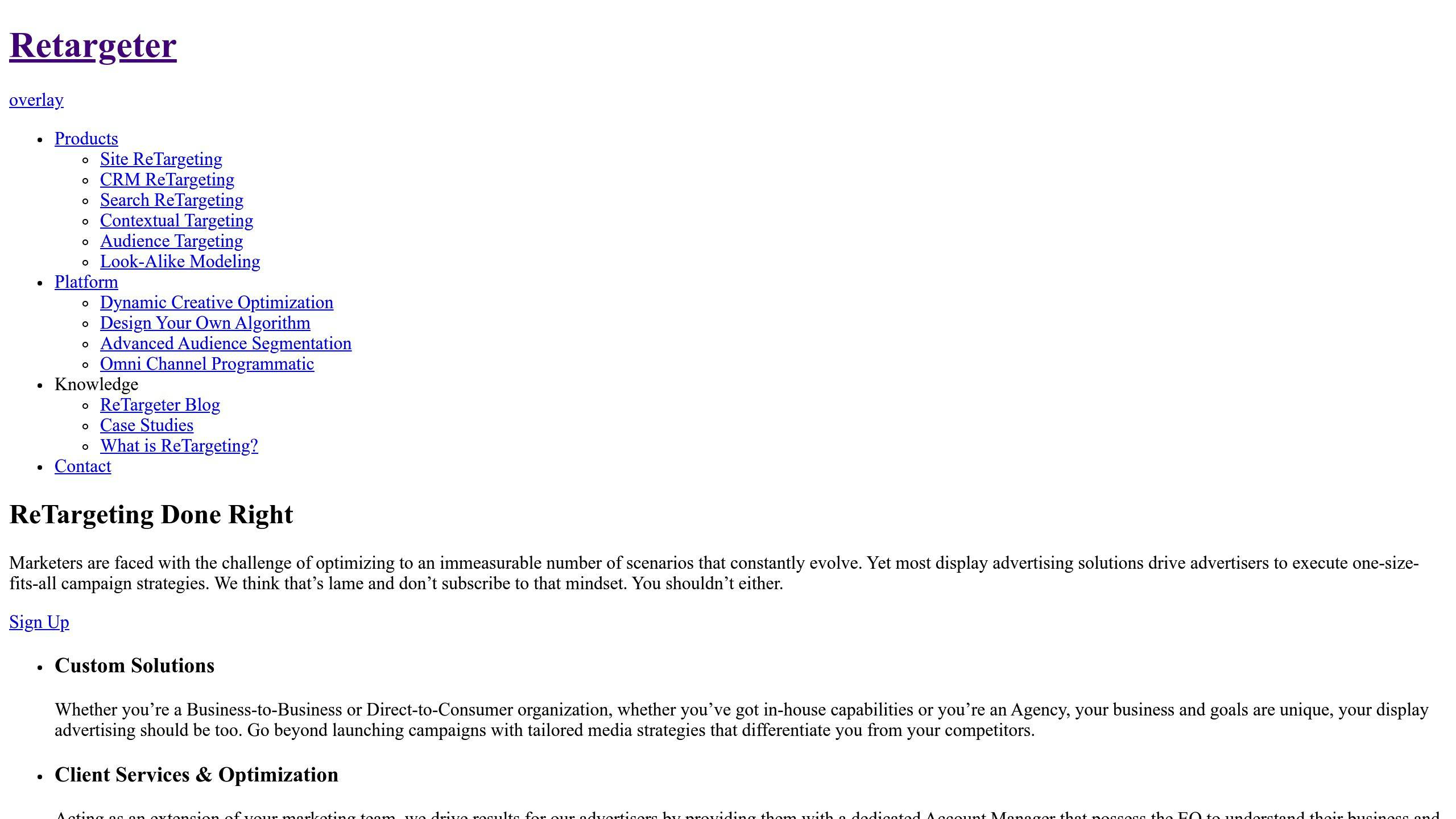
ReTargeter is a standout in the PPC world, offering advanced targeting options and personalized account management. It's best suited for businesses with over 30,000 unique visitors per month, making it ideal for high-traffic websites.
Here’s a breakdown of its targeting options:
| Targeting Type | Key Features | Best For |
|---|---|---|
| Site Retargeting | Tracks visitors using cookies | Recovering abandoned visits |
| CRM Retargeting | Uses customer databases | Engaging existing customers |
| Search Retargeting | Targets based on search queries | Attracting new prospects |
| Email Retargeting | Targets newsletter subscribers | Nurturing leads |
ReTargeter also provides tools for creating dynamic ads, allowing businesses to customize their campaigns in ways traditional platforms might not. Integration with Facebook Exchange further boosts its reach, ensuring ads perform across social media channels.
One standout tool is the frequency capping system, which limits ad exposure to 15-20 impressions per user each month. This helps prevent ad fatigue while keeping audiences engaged.
"ReTargeter effectively re-engages interested users through advanced targeting and optimized ad creatives." - Arjun Dev Arora, Founder and CEO of ReTargeter
Every client is paired with a dedicated account manager to handle campaign strategy, audience segmentation, creative performance, and conversion tracking. The platform also supports cross-channel campaigns by integrating with multiple ad exchanges and analytics tools.
ReTargeter addresses privacy regulations like GDPR and CCPA by combining cookie-based and cookie-less targeting methods. This ensures campaigns remain effective while staying compliant with privacy laws.
The service starts at $1,500 per month, which includes 175,000 impressions and personalized campaign support. Unlike some competitors, ReTargeter provides full access to all features, regardless of spending levels.
While ReTargeter is a strong choice for high-traffic sites needing custom solutions, smaller businesses might find SharpSpring Ads a better fit for their budget and retargeting needs.
7. SharpSpring Ads: Retargeting Tools
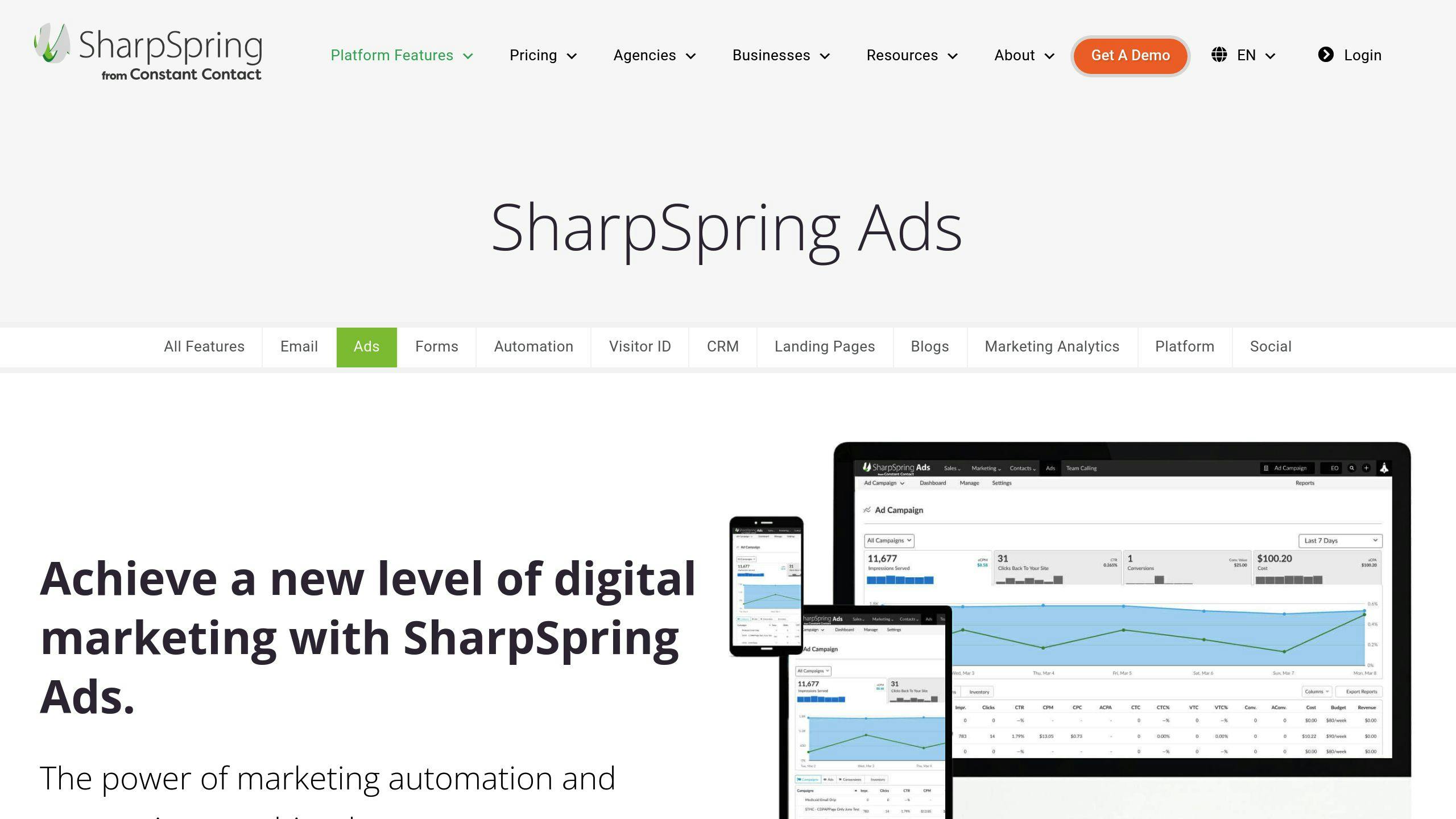
SharpSpring Ads uses its Visitor ID technology to identify anonymous visitors by analyzing their behavior and matching it with stored data. This helps marketers engage with potential customers more effectively, solving a common issue in digital marketing.
The platform organizes its targeting options into three main categories:
| Targeting Type | Features | Best Use Case |
|---|---|---|
| Website Visitor | Cookie-based tracking, cross-device targeting | Re-engaging site visitors who left without converting |
| Email List | CRM integration, custom audience creation | Turning existing contacts into customers |
| Lookalike | AI-powered lookalike targeting based on behavioral analysis | Discovering new, high-potential prospects |
SharpSpring Ads supports a variety of ad formats, including display, native, and video ads. By leveraging AI, it optimizes ad placements and bidding strategies to improve ROI. Its integrations with major advertising networks - like Google Ads, Facebook Ads, and LinkedIn Ads - set it apart from competitors such as ReTargeter. This multi-channel capability allows marketers to manage all their campaigns from a single, user-friendly dashboard.
The platform also offers detailed analytics, tracking metrics like click-through rates, conversions, and ROI. For example, one client achieved a 25% increase in conversions and reduced acquisition costs by 30%.
SharpSpring Ads uses a custom pricing model tailored to the needs of individual campaigns, offering flexibility that many competitors, like ReTargeter, lack. New users can also take advantage of a free trial to explore its features before committing.
For businesses that value personalization and automation in their retargeting strategies, SharpSpring Ads is a strong choice. However, for those wanting more direct control over their campaigns, Meteora might be a better fit.
"Retargeting is not just about serving ads to people who have visited your website, it's about creating a personalized experience that drives conversions." - Rick Carlson, CEO of SharpSpring
8. Meteora: Platform Insights
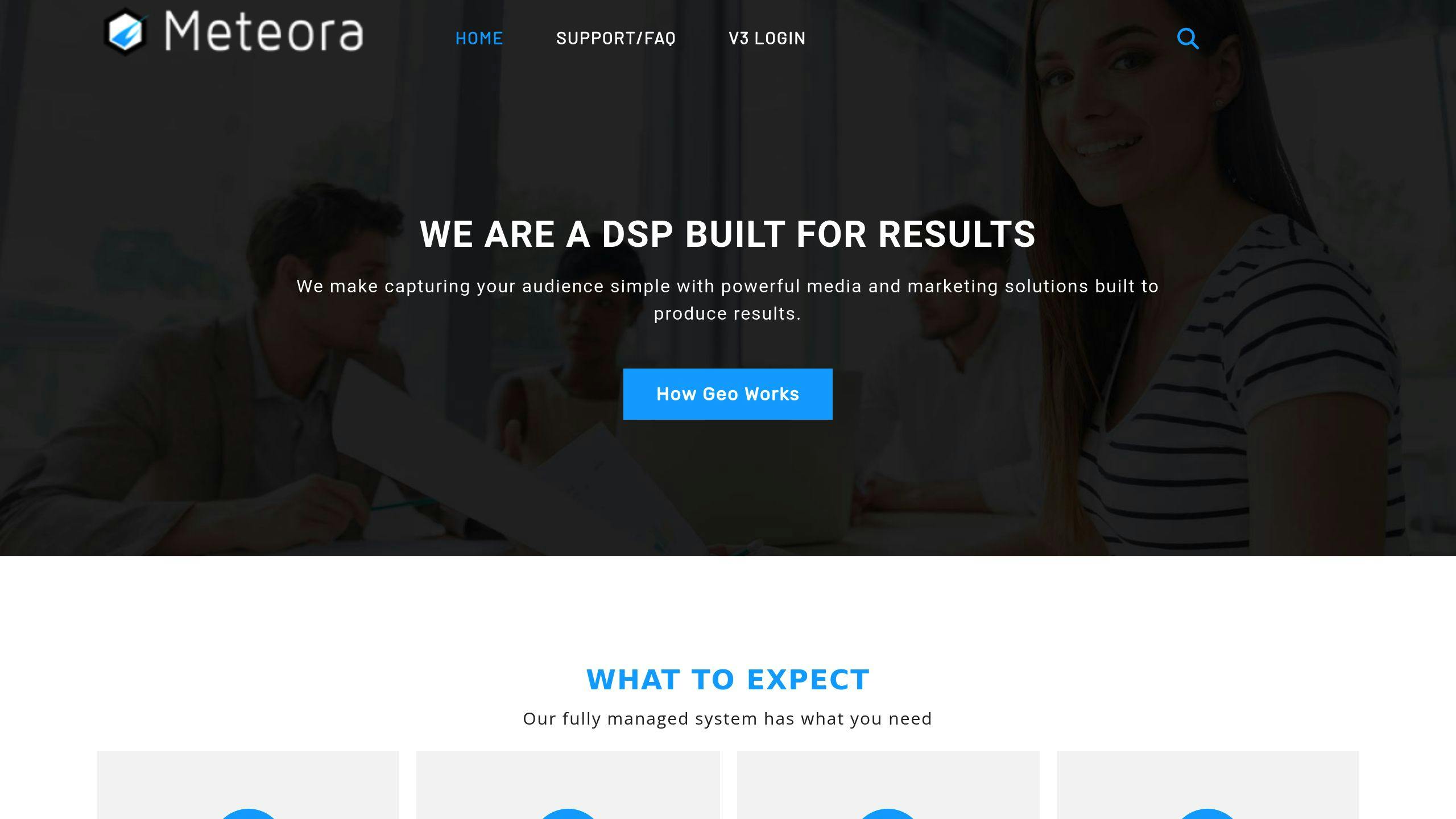
Meteora is a strong player in the PPC retargeting space, offering a standout Advanced Targeting Suite. This suite uses geofencing and proximity targeting to connect with users near high-traffic areas, making it especially useful for retail and event-focused businesses. Advertisers can create unlimited geofences around specific locations, ensuring precise targeting within just 30 seconds of a webpage loading or an app opening.
| Feature Category | Capabilities | Best For |
|---|---|---|
| Location Targeting | Geofencing, proximity targeting, weather-based targeting | Retail stores, restaurants, event venues |
| Dynamic Ads | One-click pixel setup, e-commerce integration, custom feeds | Shopify and WooCommerce merchants |
| Campaign Control | Frequency capping, IDFA lists, IP targeting, third-party segments | Multi-channel advertisers |
Meteora provides detailed reporting on device usage, domain performance, and geofence results. It covers 98% of the internet across desktop, mobile, and in-app placements. With no minimum spend requirements and a pay-as-you-go pricing model, it’s accessible for businesses of all sizes.
One of Meteora's standout features is its fast deployment for e-commerce. While it supports platforms like Shopify and WooCommerce, its ability to launch dynamic ads in under 3 minutes is a key differentiator. For businesses needing branded solutions, it also offers custom white-label options.
Meteora includes specialized targeting features like weather-based targeting, which lets advertisers adjust campaigns based on real-time weather conditions - perfect for seasonal or weather-sensitive businesses. Its proximity targeting even enables real-time competitor targeting, reaching potential customers at competitors' locations.
Unlike many retargeting platforms, Meteora offers ongoing account management after the initial two months, ensuring campaigns stay optimized. While Meteora shines in location-based targeting, platforms like AdRoll might be a better fit for broader cross-channel strategies.
With its cutting-edge geofencing tools and flexible pricing, Meteora is a solid choice for businesses focused on location-specific retargeting. Up next, we’ll see how these platforms compare overall.
Comparison of Platform Strengths and Weaknesses
Different platforms shine in specific areas, making them better suited for particular business objectives. Picking the right one is key to getting the best return on your investment. Here's a breakdown of each platform's strengths, challenges, and ideal use cases:
| Platform | Strengths | Limitations | Best For |
|---|---|---|---|
| Google Ads | Wide reach via Display Network, RLSA, Analytics integration | Complex interface, higher costs without proper management | Large-scale campaigns, e-commerce with bigger budgets |
| Facebook Ads | Dynamic product ads, detailed demographic targeting, strong user engagement | Privacy limitations, risk of ad fatigue | Social-focused campaigns, B2C businesses |
| AdRoll | Cross-channel management, access to multiple networks | Complicated pricing, steep learning curve | Mid to large businesses needing unified management |
| Criteo | AI-driven optimization, dynamic creative updates | Limited manual control, requires significant data | Enterprise-level retailers |
| Perfect Audience | No setup fees, unified dashboard, multi-channel focus | Smaller reach compared to larger platforms | Small to medium businesses, startups |
| ReTargeter | Dedicated account management, advanced segmentation | Higher minimum spend, premium pricing | Businesses needing managed services |
| SharpSpring Ads | Marketing automation integration, behavioral targeting | Limited network reach | B2B companies, marketing agencies |
| Meteora | Advanced geofencing, weather-based targeting | Focused on location-specific campaigns | Local businesses, retail stores |
On average, retargeting display ads cost about 66¢ per click, while search retargeting clicks are closer to $1.23, depending on the platform.
Platform-Specific Insights
The leading platforms offer distinct benefits:
- Google Ads: Known for its massive reach, integration with Analytics, and RLSA capabilities, it's a strong choice for businesses with large-scale campaigns and e-commerce goals.
- Facebook Ads: Offers highly detailed audience targeting and dynamic retargeting, making it ideal for social-driven campaigns, especially for B2C brands.
- AdRoll: Perfect for larger organizations, it simplifies campaign oversight with cross-channel management.
- Criteo: Stands out with AI-powered creative optimization, automating bidding and ad delivery for enterprise-level retailers. However, this automation limits manual control.
Common Implementation Challenges
Running successful campaigns requires attention to detail. Accurate audience segmentation, timely ad delivery, and regularly updated creatives are essential to avoid ad fatigue. For instance, eBags increased click-through rates by 20% and boosted revenue by 10-15% by using dynamic retargeting effectively.
Choosing the right platform depends on matching its features to your business goals, budget, and audience. Factors like technical expertise, targeting needs, and campaign scale should guide your decision.
Final Thoughts and Recommendations
Here’s a breakdown of recommended platforms tailored to different business needs, highlighting their strengths and typical costs:
| Business Type | Recommended Platform | Key Advantage | Average Cost Per Click |
|---|---|---|---|
| B2B Services | SharpSpring Ads | Integration with automation | $1.20 |
| Retail Chains | AdRoll | Cross-channel management | $0.66 |
| Local Stores | Meteora | Geofencing capabilities | $0.85 |
| E-commerce | Facebook Ads | Dynamic product ads | $0.70 |
For enterprise e-commerce businesses, using both Google Ads and Criteo creates a powerful combination. Google Ads offers broad reach via its Display Network, while Criteo’s AI-driven tools adjust campaigns based on performance data. Together, these platforms often deliver a 15-20% higher ROAS compared to relying on just one.
Small and medium-sized businesses with tighter budgets might find Perfect Audience or SharpSpring Ads to be better fits. These platforms are easier to start with and have user-friendly tools. Perfect Audience’s no-setup-fee policy and unified dashboard are especially helpful for those new to retargeting.
For local retailers, Meteora’s geofencing and weather-based targeting features can boost foot traffic by up to 25% during favorable conditions. This makes it an excellent choice for businesses focused on location-based marketing.
Once you’ve chosen a platform, focus on proper campaign setup to maximize ROI. Regular monitoring and timely adjustments are key to success. Start with one platform that aligns with your goals, then expand to multiple platforms as you gather insights and fine-tune your strategy.
Also, ensure that your platform complies with privacy regulations like GDPR and CCPA. With third-party cookies being phased out, platforms offering strong data protection and alternative targeting methods will become increasingly important. By aligning platform features with your objectives and staying ahead of privacy changes, you’ll set up your retargeting strategy for long-term success.
